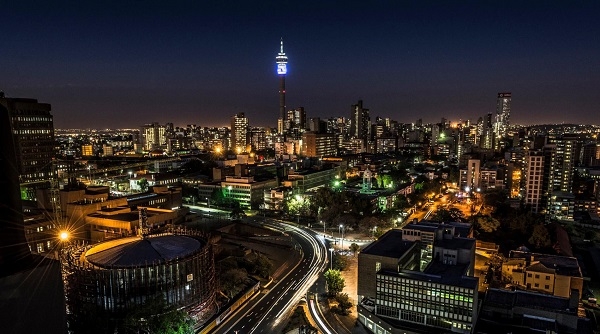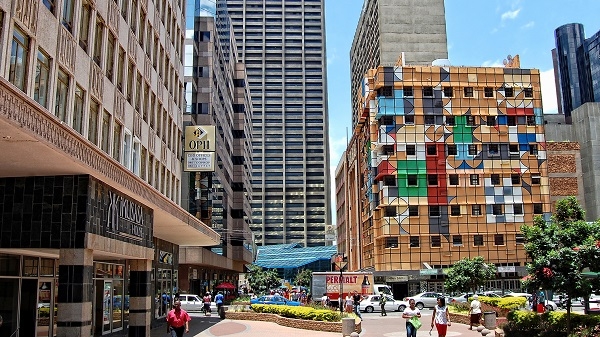The Jo’burg Times
Total Views |
I had stayed for a week on work in Johannesburg (popularly Jo’burg) of the ‘Rainbow Republic’ i.e. South Africa, in January 2011. Although I didn’t have much opportunity to move around freely, I did gather a few observations – the local, the glocal & the Indian.
The Local
The outside image of Jo’burg is of a crime-infested city. I was told beforehand by my local colleagues (white, to be precise) to be cautious not to move around walking streets alone. I followed the advice completely. The place (Rivonia Valley) where I stayed was so far off from the city that I hardly had a choice. Security seemed to be the biggest worry there and you could literally see ‘the writing on the wall’ clearly. All the houses (which we’d call bungalows, kothis or havelis in India) were well protected by high walls, fortified / electrified fencing which they called rhino fencing for whatever reasons. There were seemingly funny but may be realistic boards hanging out there. The regulars ones were like “Beware of dogs” & “Trespassers will be prosecuted”, but one Lourdes House which was a retirement home, had a board outside saying, “Entry is at your own risk. Management will not be liable to any damage to property or vehicles”. Toping it all, the board outside one house had an animal’s face painted (may be a cross-breed between a dog & an unfamiliar beast) and declared, “Trespassers will be eaten”. Needless to say, I walked away quickly enough.

Johannesburg is the economic capital of South Africa. It’s also the busiest & most populated city there. As I myself belonged to the economic capital of India and undoubtedly the busiest city, I thought I could relate to Jo’burg easily. But, I couldn’t. One of the reasons was the massive greenery that you find throughout (it is acknowledged as world’s no.1 city for its man-made forest-like greenery) which is unimaginable in Mumbai. The quiet and unhurried restaurants offer you space and a good time, which again is unthinkable back in Mumbai or for that matter in any Indian city. But, hats off to Mumbai for being one of the safest city on the earth despite all (other) odds.
The white population seems to be gripped by fear (of the black majority). All of them admire Nelson Mandela for having engineered a peaceful transition of power post 1994, when the apartheid government was overthrown. But as Mandela’s health was not in good shape then, they foresaw a systematic reverse discrimination if not serious backlash, post his death. Many of them had started emigrating to the UK, US or Australia over last few years.
The White solidarity too seemed to be under pressure. The Afrikaans-speaking population of European descent felt that their language was being anglicised gradually. The English being the international language and that of the single largest group of Anglo-Saxons among the Whites there, Afrikaans though having completely South African origin, is slowly loosing ground. With the sun rising on the side of other African origin languages like Zulu & Xhosa, their feelings are understandable.
However, the surprising thing on the social scenario I found that the urban White school-going students hadn’t yet recognised the need to study the African languages (which are yet as optional subjects), which actually may go a long way helping them to integrate in the mainstream in the long term. They probably were waiting for the time till they were made compulsory.
The Glocal
On the pleasure side, it might sound strange though, I enjoyed the South African wines more than I did with their French counterparts in Paris. But, one ought not to forget that the early French settlers of South Africa were fully responsible for the introduction of wines in this part of the world too. Possibly the grapes here were better. I was happily surprised to find out & eat at the Nando’s, which I had patronised earlier back in Mumbai, without knowing that it was of South African origin. The chicken tasted better that what it did at the Mumbai franchisee. Thirdly, as one shouldn’t give up experimenting, I experimented with ostrich meat, in honour of the African surrounding, as I had done with the snails in Paris, paying respect to the French tradition. I must confess that I was delighted on both the occasions.

However, knowing that the Portuguese were the first Europeans to set foot on the South African soil, which they mainly used for a break during their onwards travel to India, my first meal that I ordered in Jo’burg ‘as a mark of recognition’ was Portuguese. It was not only boringly tasteless, but I was also amused by the “rolls” that accompanied the main course; it was the same humble pao that we get at every vada-pao joint in Mumbai.
The Indian
South Africa as a nation, is connected to India in two prominent ways. One is of course cricket, which the British took everywhere they went and popularised in their colonies. The second is Mohandaa Gandhi, not to mention the Indian diaspora mainly in the province of Natal. It’s enough to say that Gandhi worked as a model & inspiration for the struggle for democracy that finally bore fruit for South Africa in 1994.
I got myself photographed by the side of two historically important (for Indians especially) monuments. One was the Gandhi Memorial, a board “Truth” written over it, hanging over an oversized cast-iron pot sitting on a small concrete structure, opposite Hamidia mosque. Gandhi had led a mob of 3000 people of Indian origin on August 16, 1908 there, who had burned their passes which identified them as a lowly (coolie, to be precise) class in a similar pot, as a form of protest against the racist practices of the govt. The second was at the “Gandhi Square”, next to his statue, which shows him as a young lawyer in his professional robes and not like the old, bare-chested figure we’re used to see in India. It was acknowledged in one of the engravings there that it was Johannesburg where the seeds of ‘Satyagraha’ were sown from where it spread outside including India. Gandhi himself had acknowledged the fond memories & the place of importance Jo’burg had earned in his heart, where he practiced in the city court (nearby to the present day square) and where he spent the largest past of his 21 years’ stay in South Africa.
Just as I’d do anywhere outside India, I set out to find a Hindu temple in Jo’burg too. Finally I found it at Crosby, a quiet Swaminarayan temple standing tall at the intersection of two streets. Sadly, it was closed. But, as if God-sent, the next moment a kind-looking Gujarati lady pulled her car in front, got down and opened the doors for us. I invited my taxi driver (of mixed German/French descent) in. He too joined me happily. Inside, they all were there – the pairs of Sita-Ram, Radha-Krishna and Ganesh & Hanuman. Interestingly, in front of the deities there stood the Indian national flag. I had no means to find out whether it was always there like that or was it due to the Republic Day of India having passed a day before. The lady had quietly moved out by then and the only other person left was busy reciting an Aarti, whom I didn’t wish to disturb. I used the opportunity nevertheless to educate the taxi driver about the Hindu pantheon of Gods a bit. He listened intently and promised me to read on the subject to be informed adequately.
By the way, I must place on record my admiration for the Hindu women (Indian-origin of course) proudly wearing their bindis everywhere, in the office or on the streets whether with western costumes or otherwise. I had noticed the same phenomenon in the Indian neighbourhood of La Chapelle in Paris. Back in India however, the ladies seem to be thinking differently. They possibly associate western outfits as a symbol of modernism where a bindi is just an odd thing out. A matter of identity confused with an adjustable accessory, I guess.

